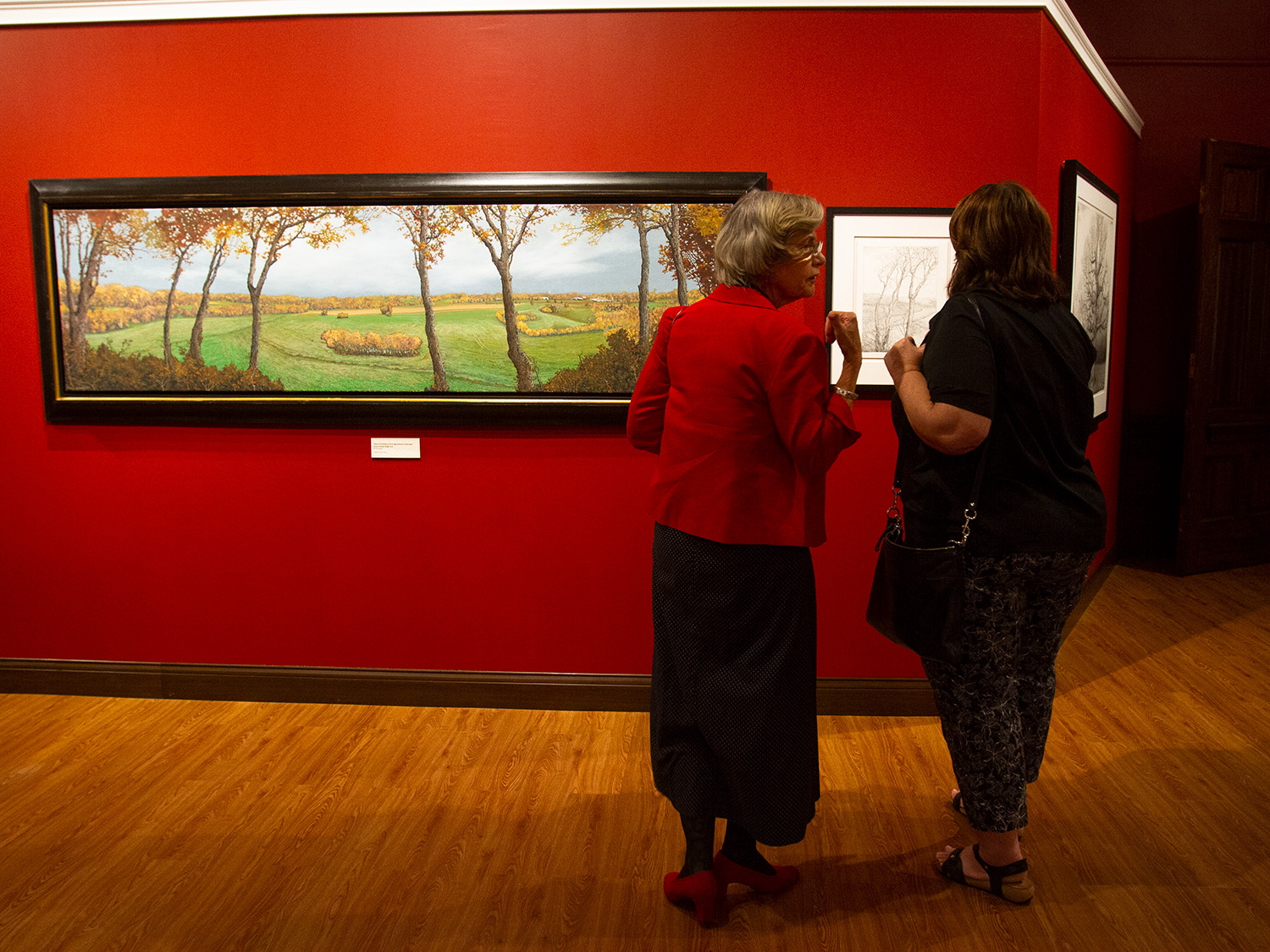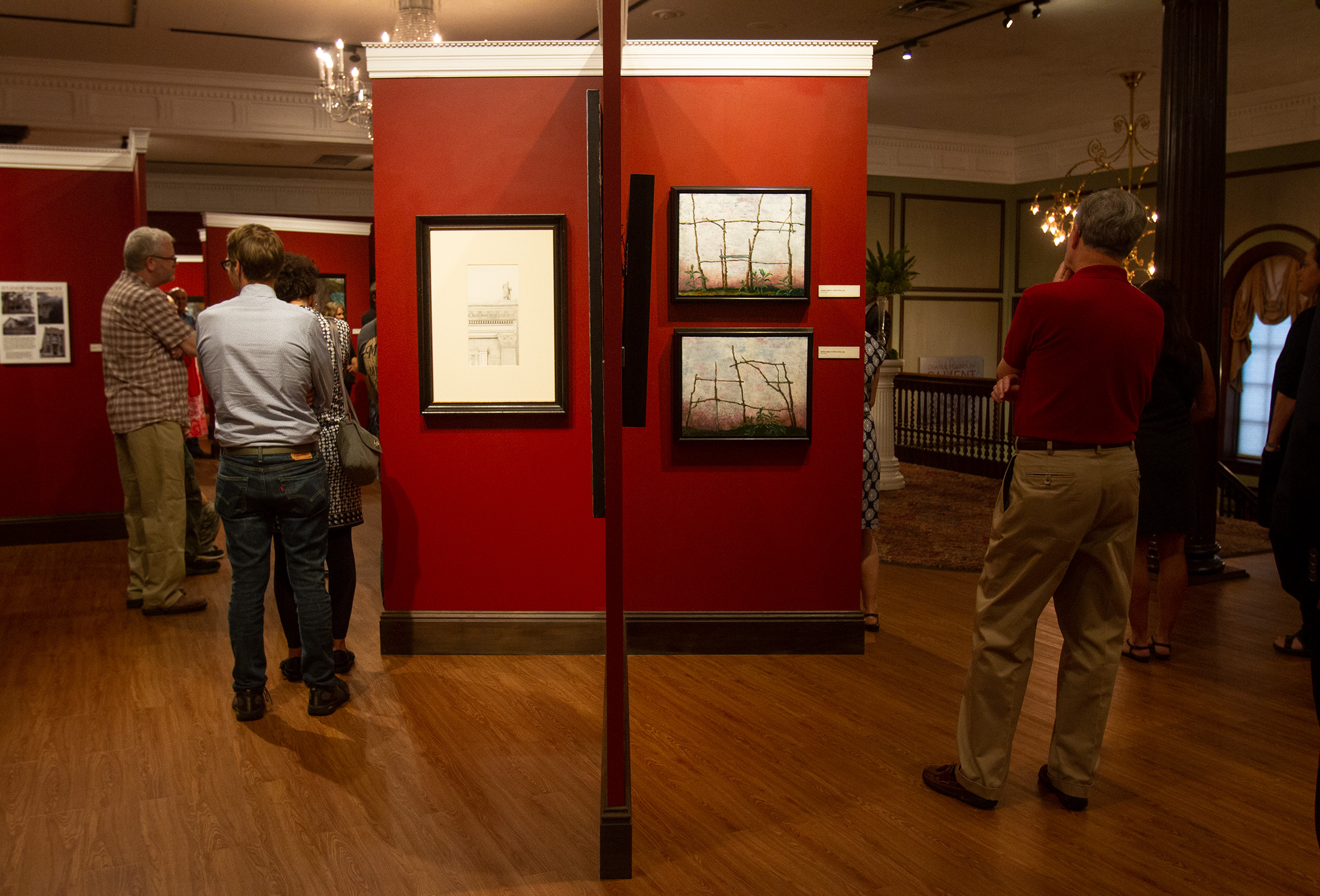[dropcap size=big]W[/dropcap]hen we walked in through the museum doors, the man behind the desk immediately asked us why we were there. I’m sure he noticed the confused, first-time museum-goer, almost-gave-up-trying-to-enter-because-we-couldn’t-find-the-front-door look in our eyes.
“We’re here to see the trees,” I told him. “The Salient Features.”
This semester, the Kentucky Museum is hosting an installation of artist Charles Brindley’s “Salient Features: Trees of Old Forests and Pastures,” until Dec. 1, 2018. Brindley himself visited the museum to speak about his work last Friday.
The exhibit, whose name refers to the most important or noticeable features, includes dozens of paintings and drawings of trees and landscapes in different seasons, stages of life and settings, mainly around Kentucky and Tennessee. The display is mesmerizing. Though trees are no rarity, especially with Bowling Green’s status as a Tree City by the Arbor Day Foundation, Brindley captured something special in each one of his works that perhaps could not be observed by casual passersby. Each one of Brindley’s paintings has a life of its own; he subtly showcases the salient features of every setting he worked with.

As if walking around the exhibit wasn’t inspiring enough, Brindley took the podium and opened up the floor for a question and answer session about his artistic process. He discussed the romantic elements of working outside, alluding to influences of transcendentalism. Brindley emphasized the spiritual and mystical powers of nature with such passion, it would have made Henry David Thoreau blush.
Brindley referred to the time he spends in nature, both in general and when he’s working, as quasi-meditative. He stressed the value of quiet, still moments in a world that is often rife with frenetic movement.
I took these words to heart as I continued looking around the exhibit—trees, and nature in general, can provide a space for the quiet, still moments Brindley mentioned. So can art, in all its many forms.
And, as I realized while walking through the other exhibits in the building, so can the Kentucky Building. The museum is a wonderful space for reflection, with the opportunity for learning and inspiration in a quiet, still environment. Move through the halls laced with the history of the Civil War. Visit the tribute to Bowling Green businessman, Duncan Hines. Attend an art gallery that promotes the romanticism of nature. Reflect.
The Kentucky Museum, which offers free admission to WKU students, faculty and staff, is bursting with the spiritual and mystical powers that Brindley alluded to in his artwork. It is more than just the building that a statue of Abraham Lincoln sits in front of. It is an important part — a salient feature — of WKU’s campus.



